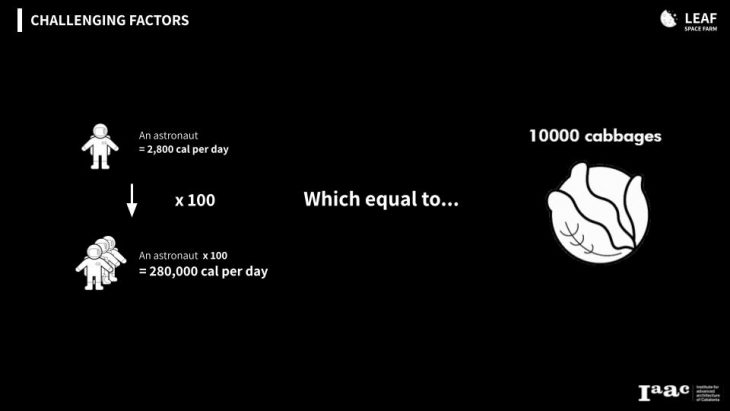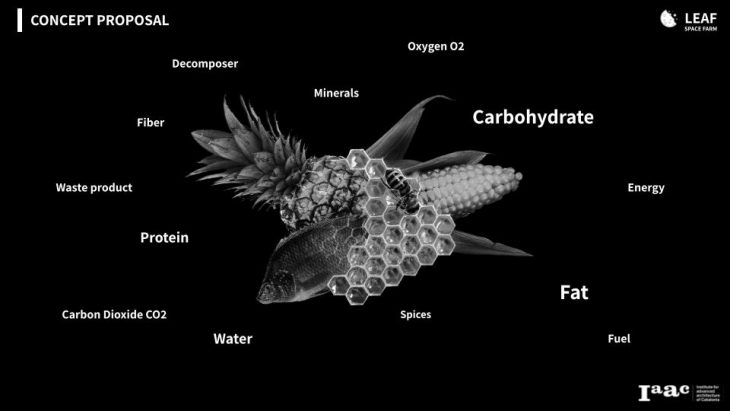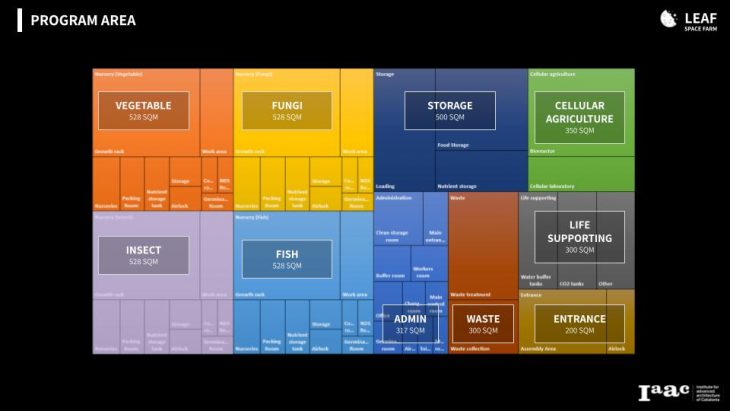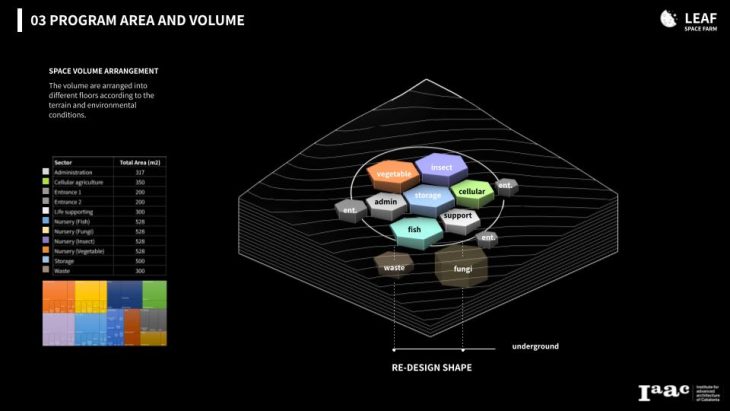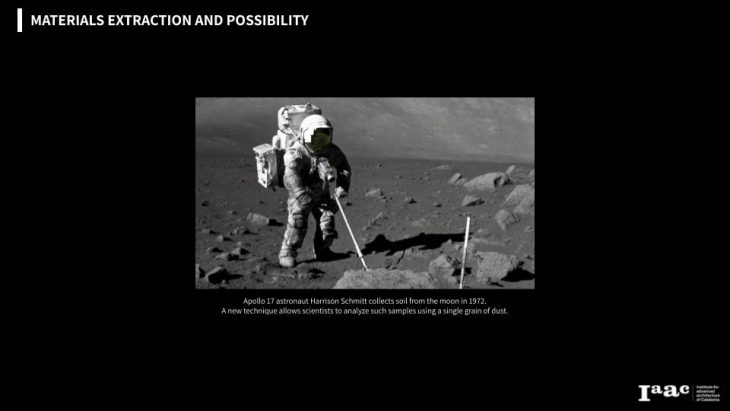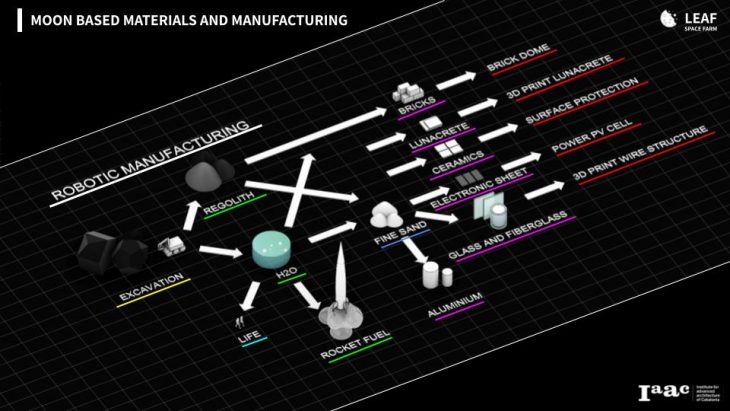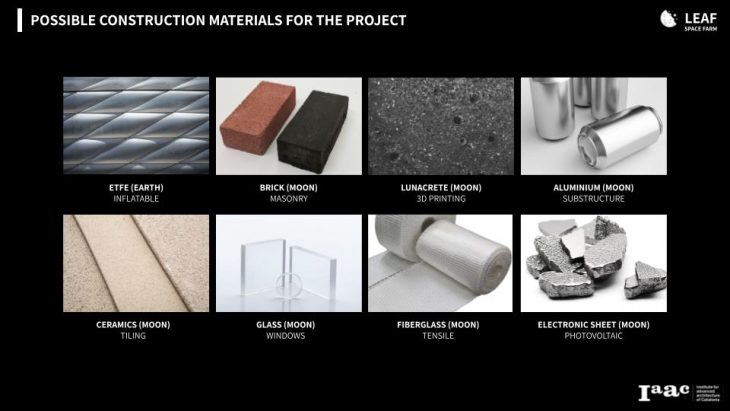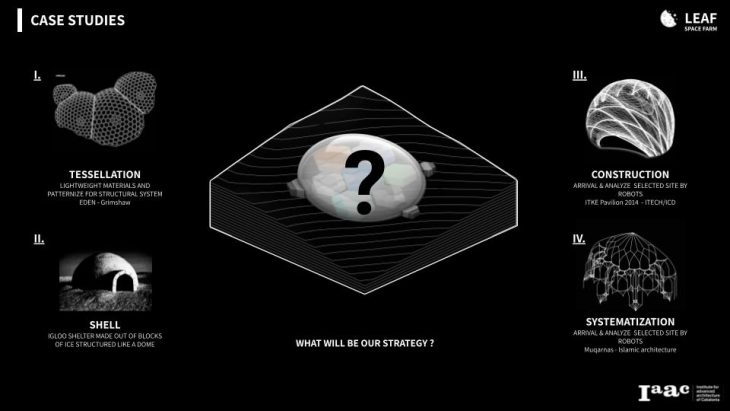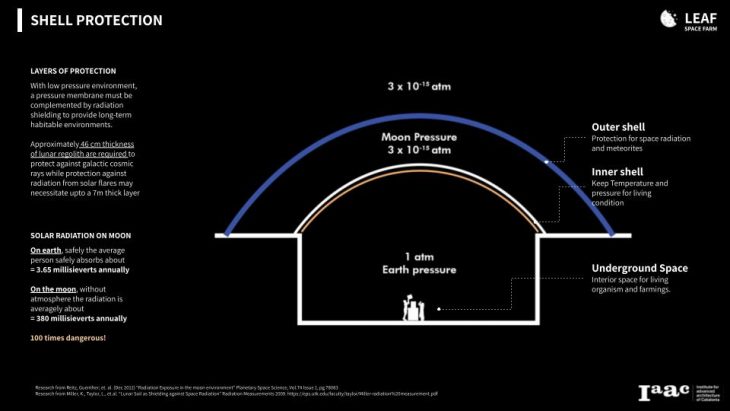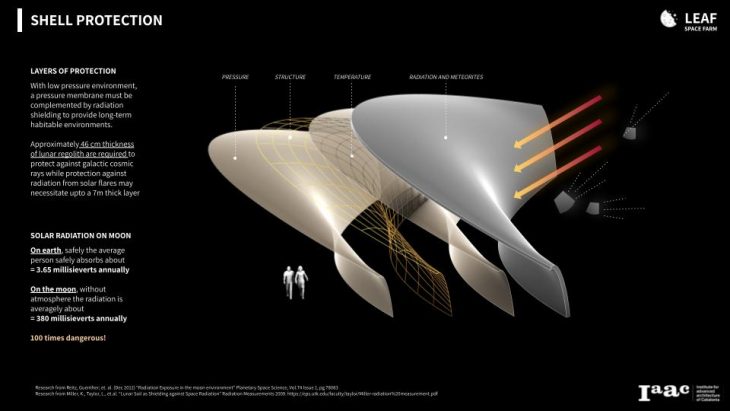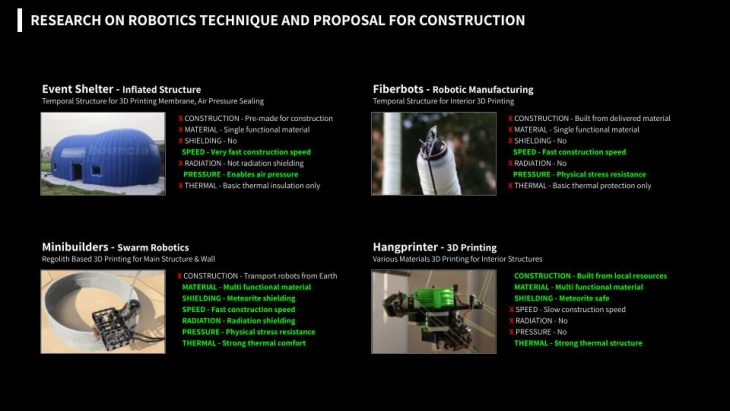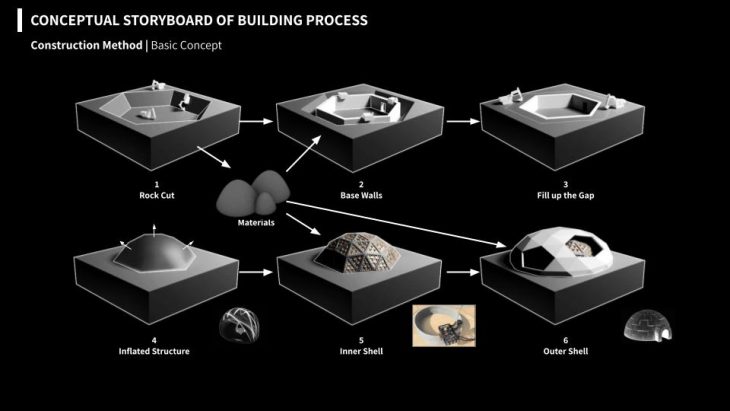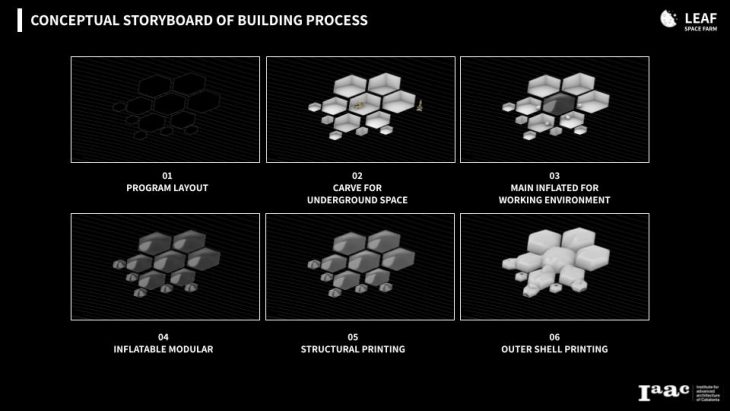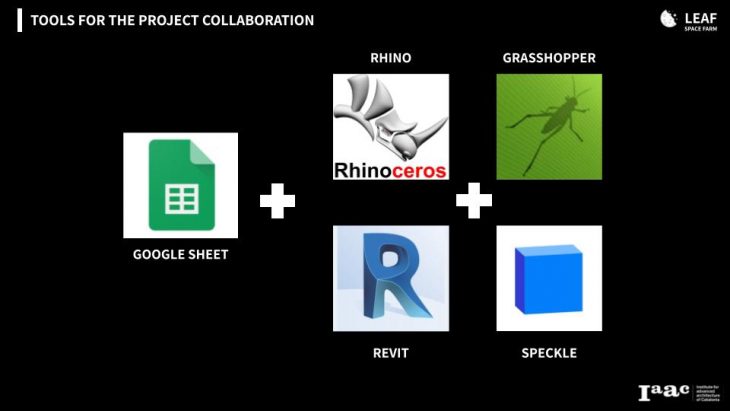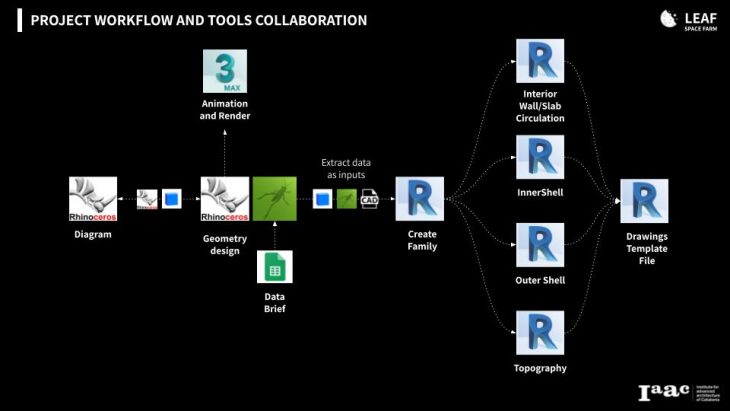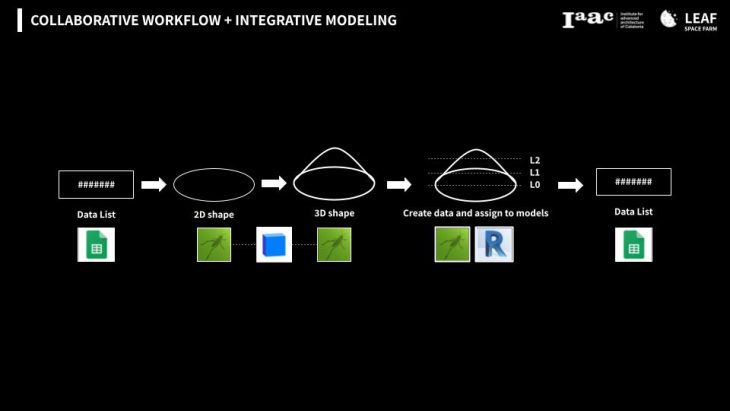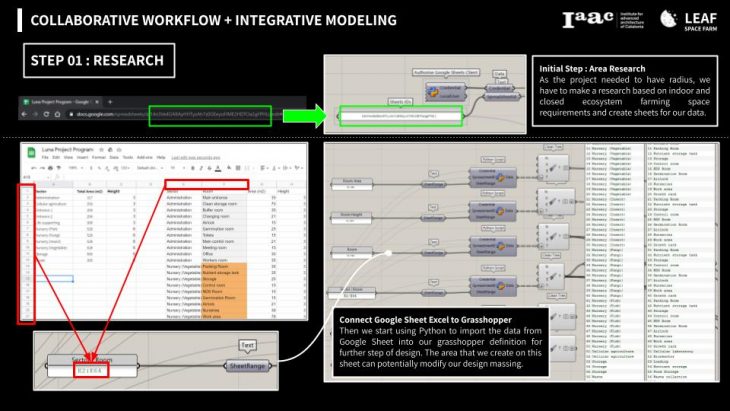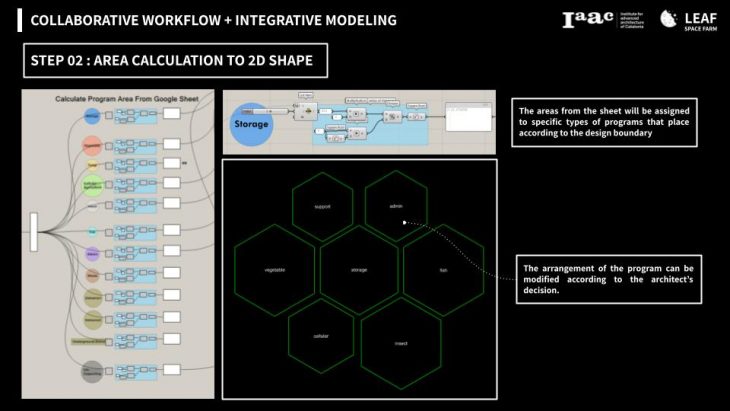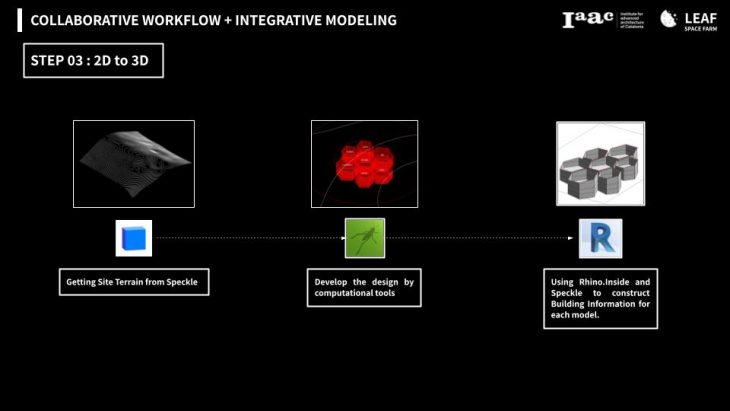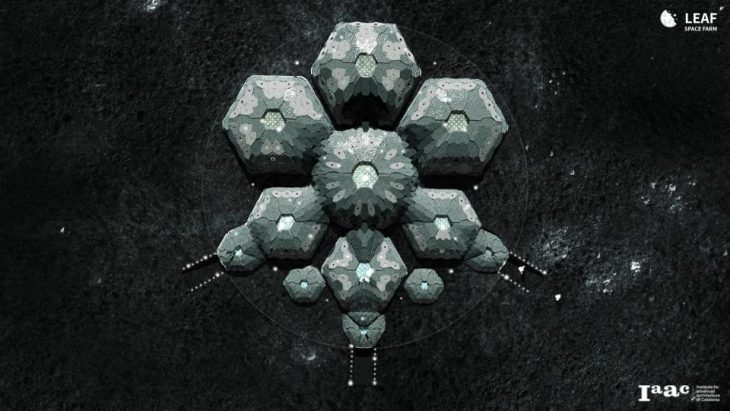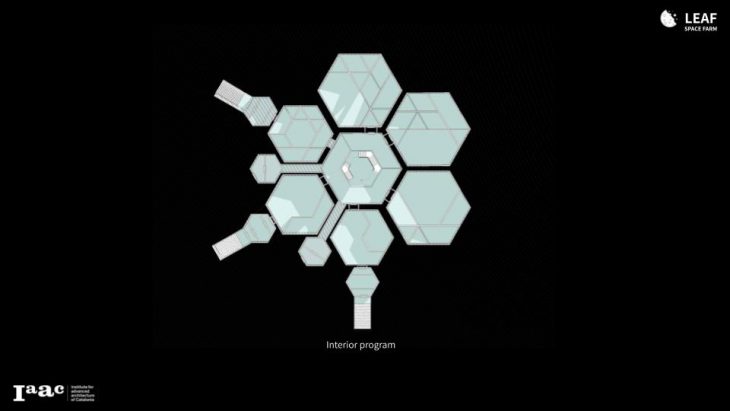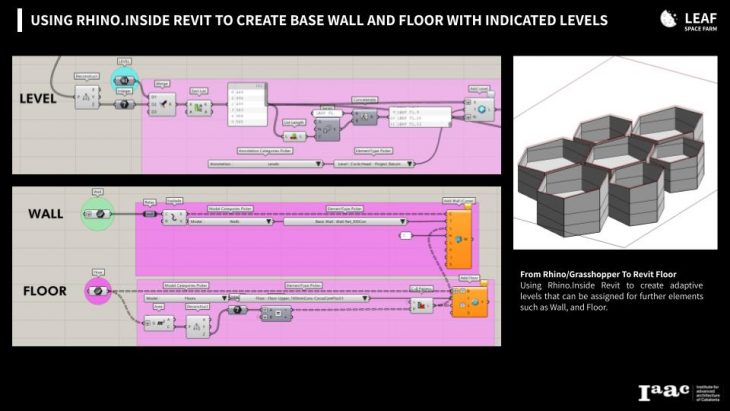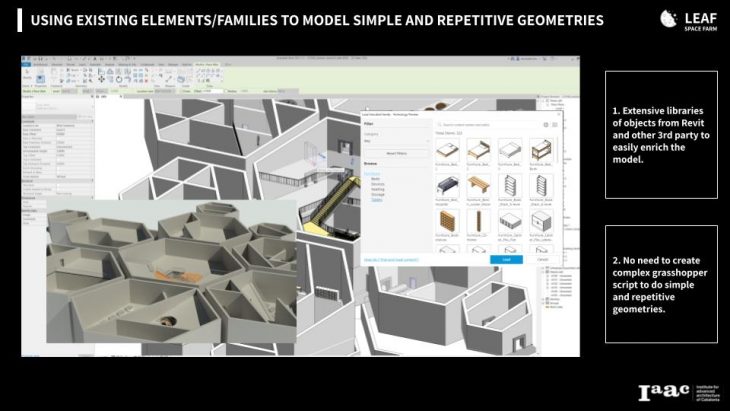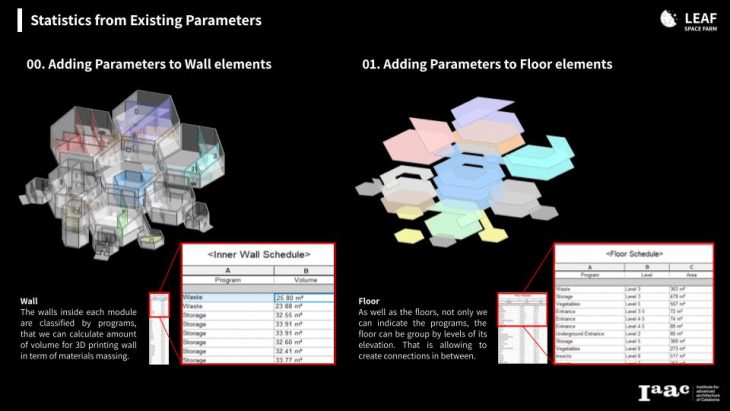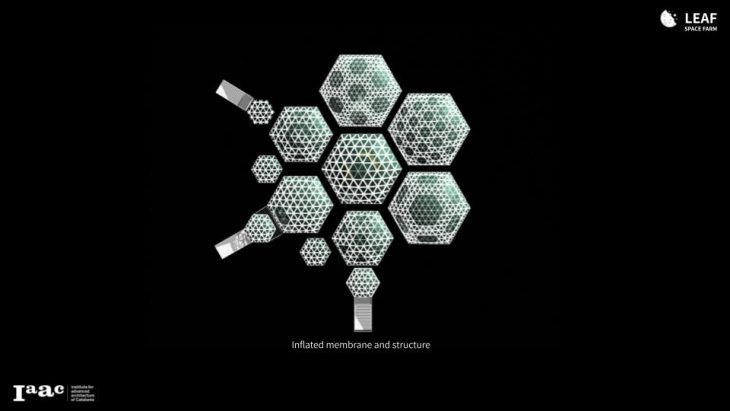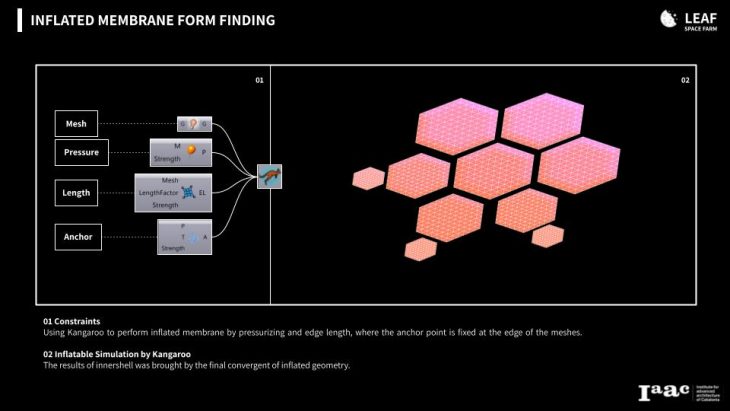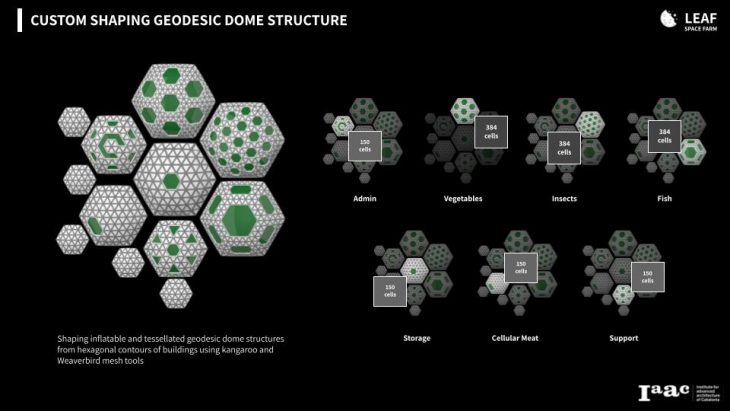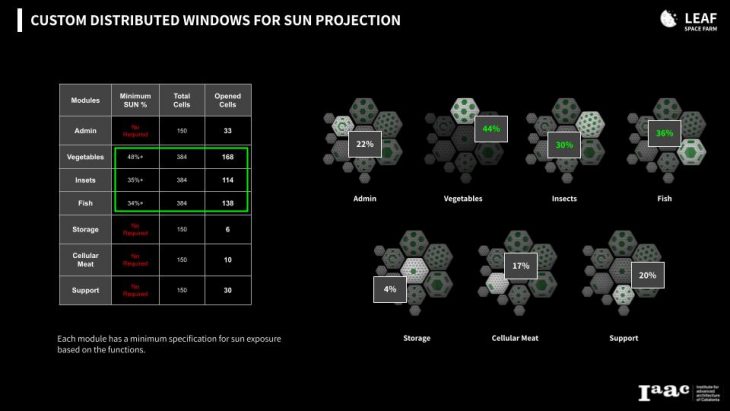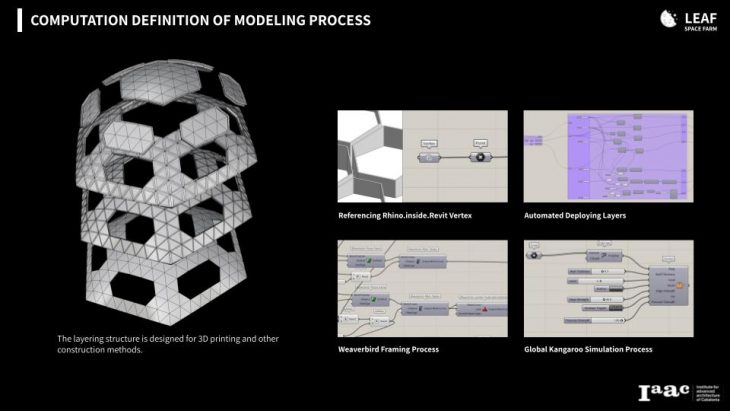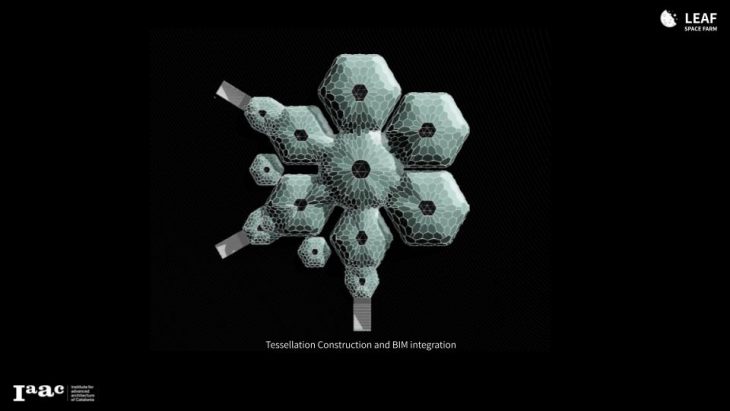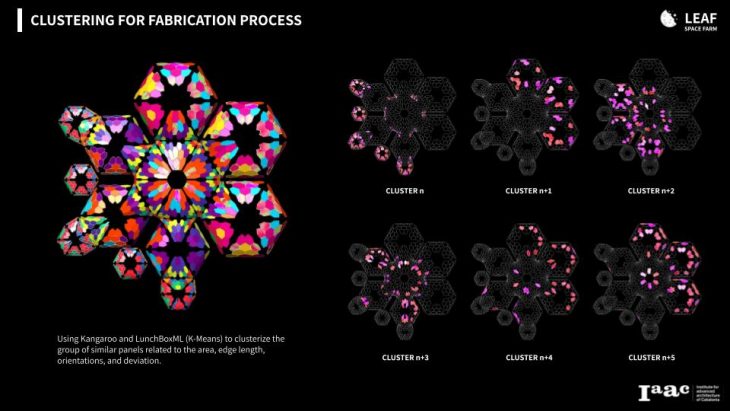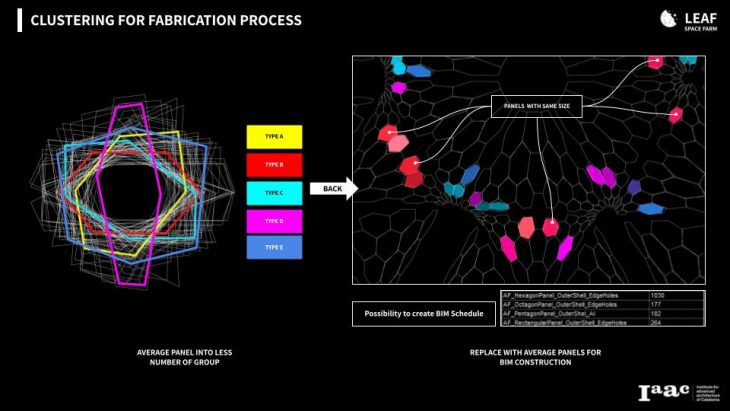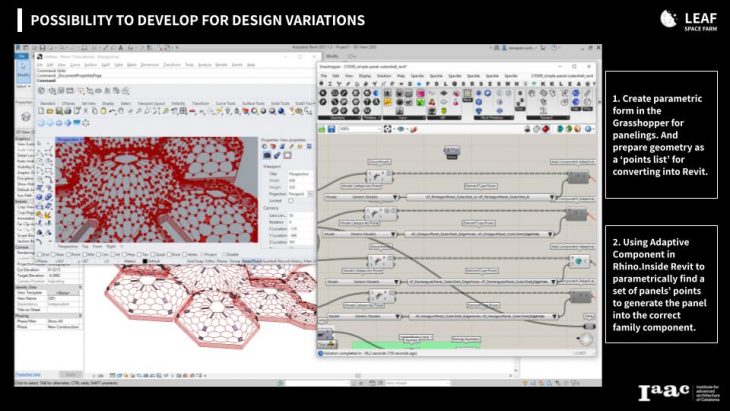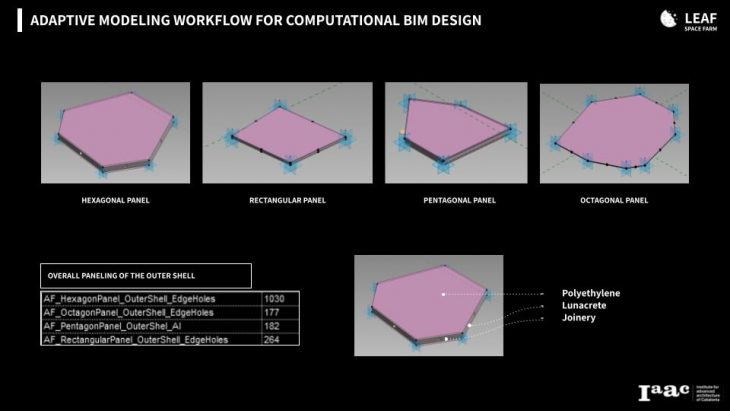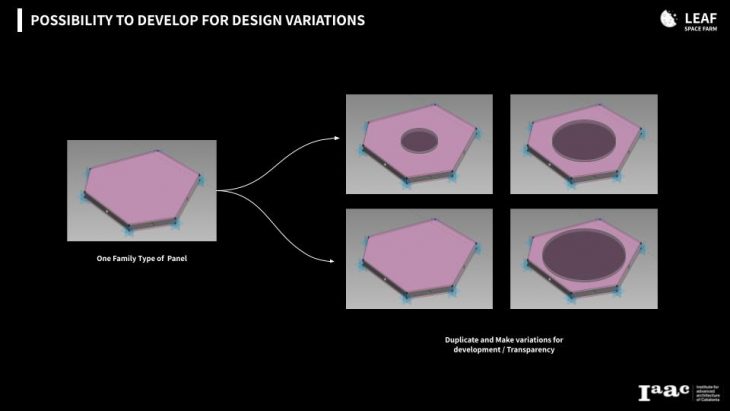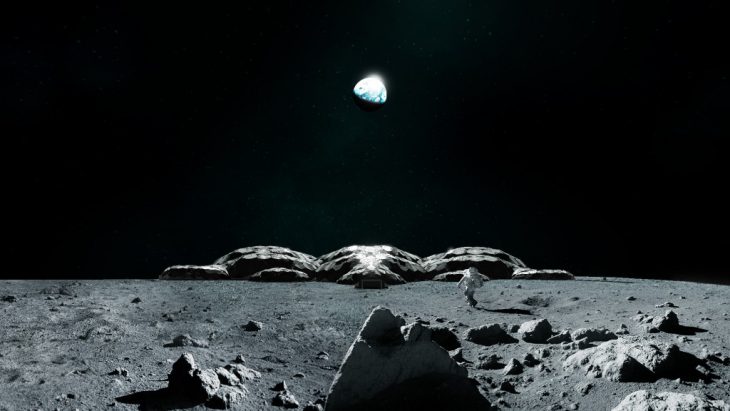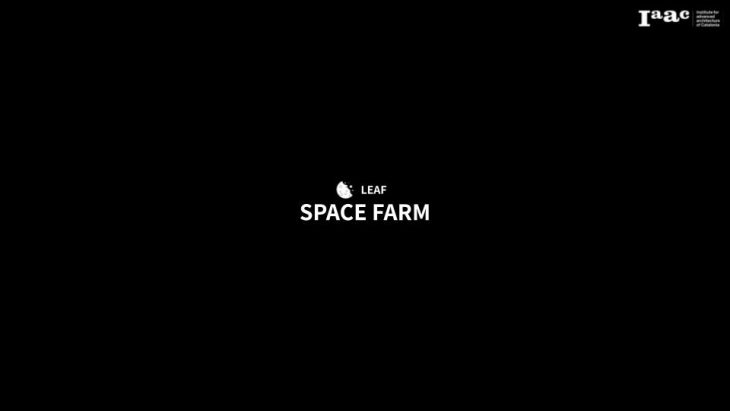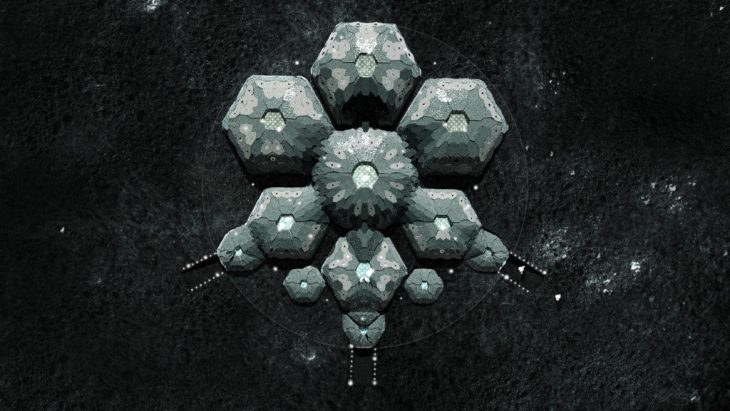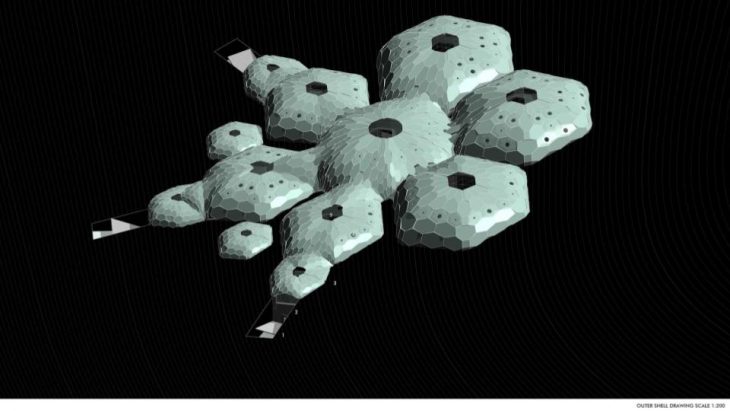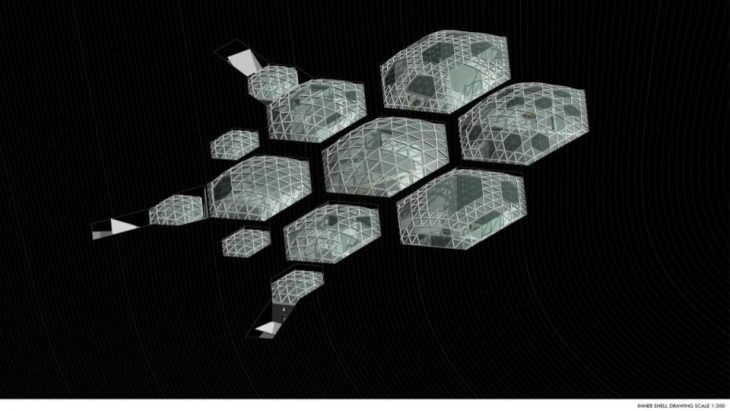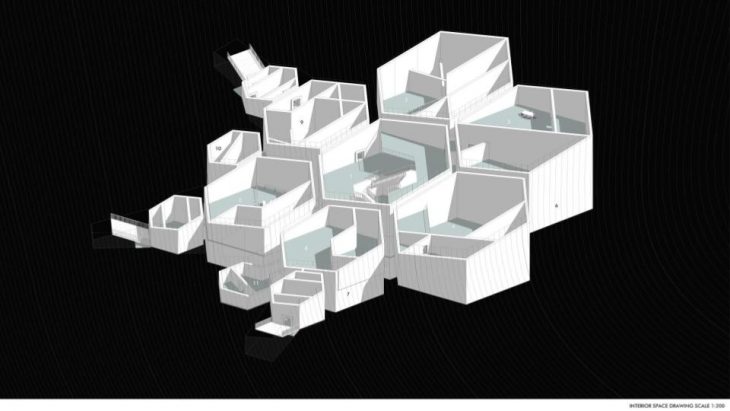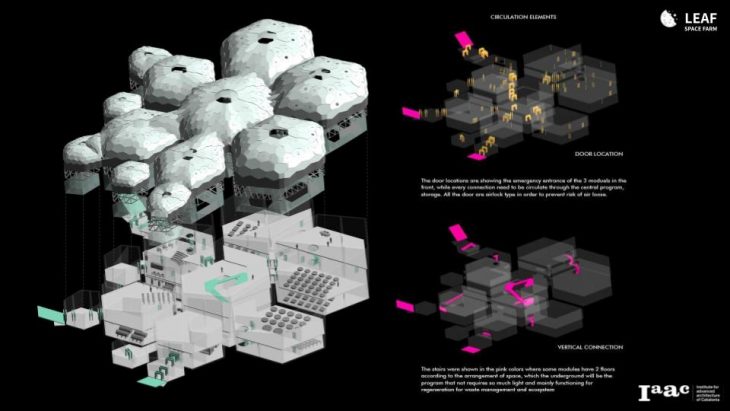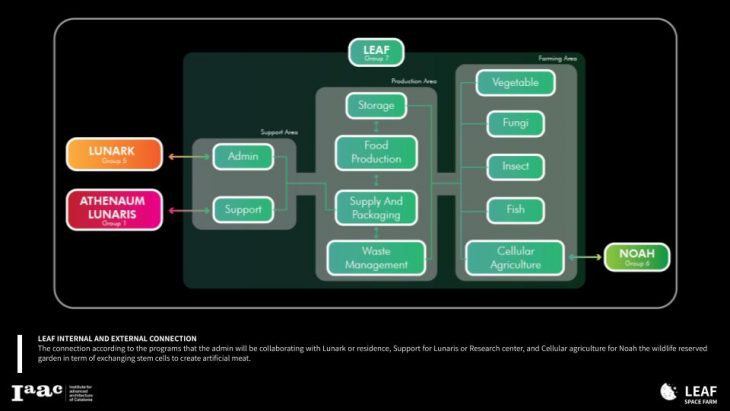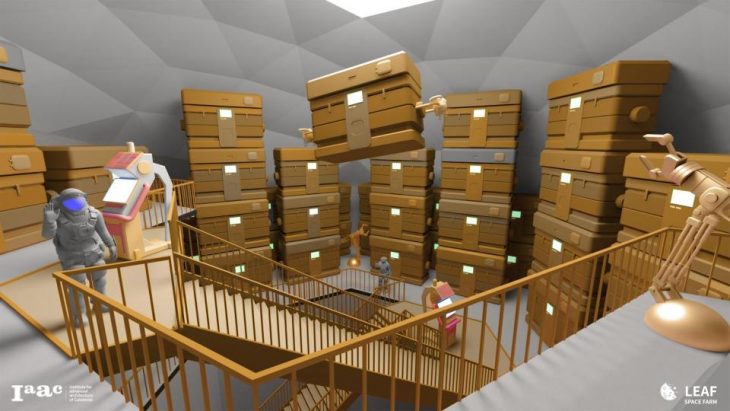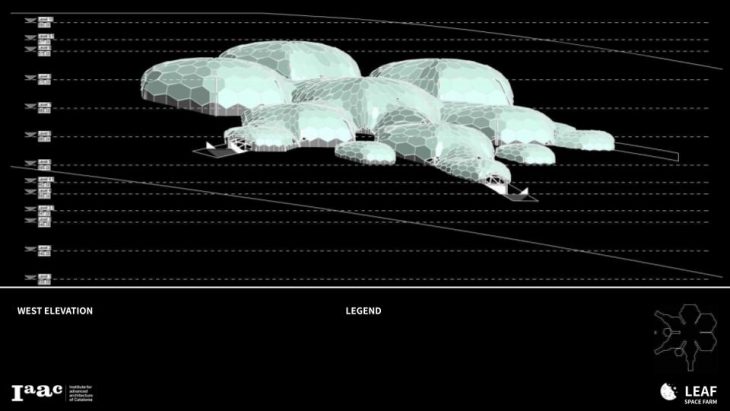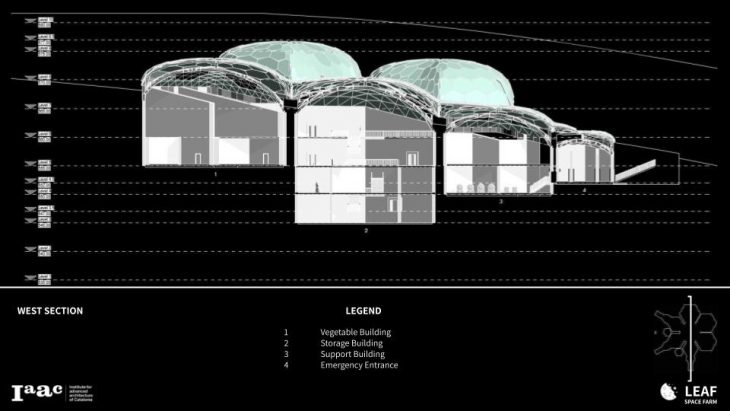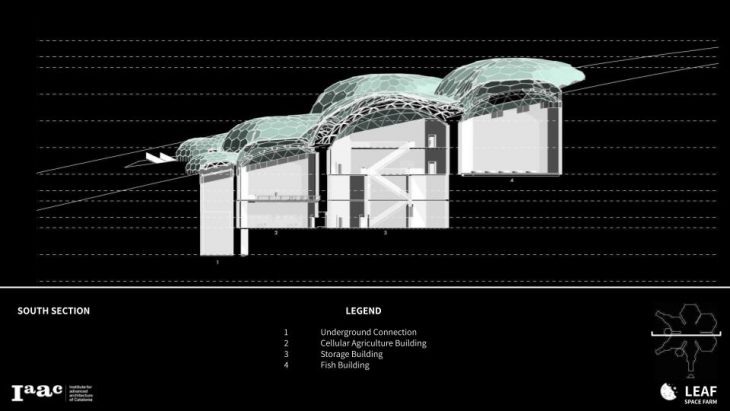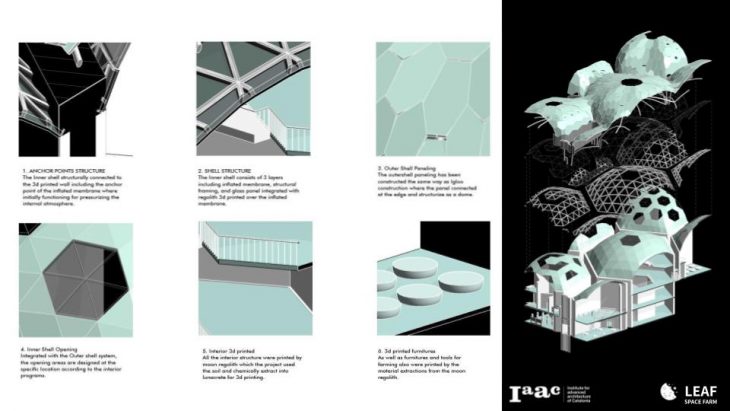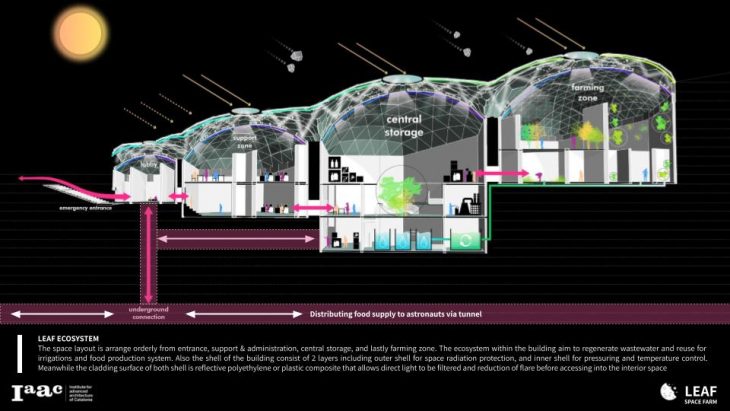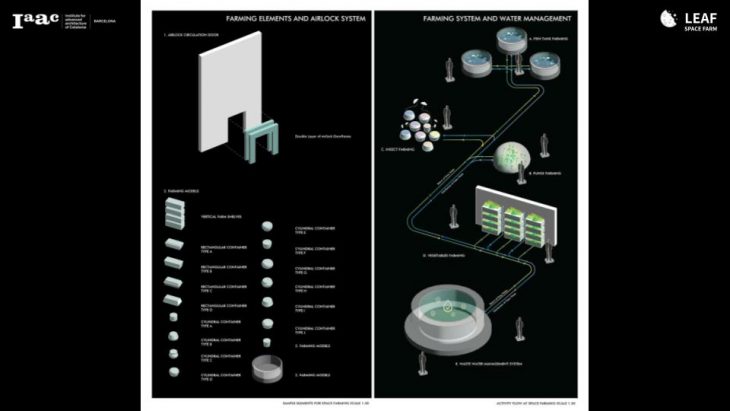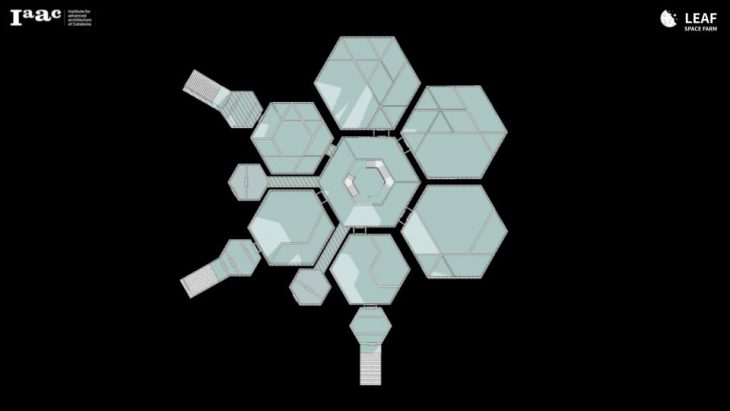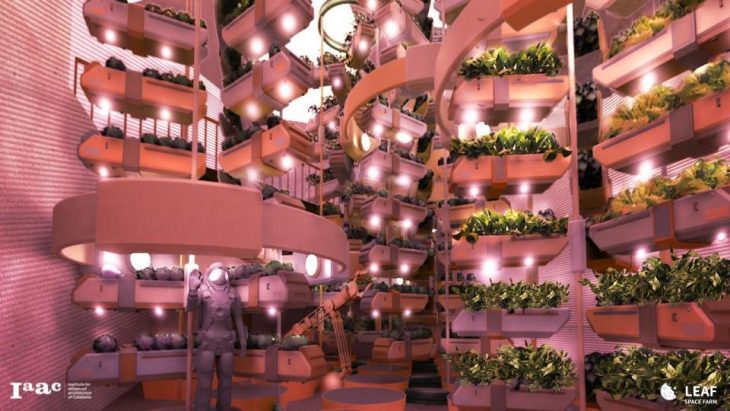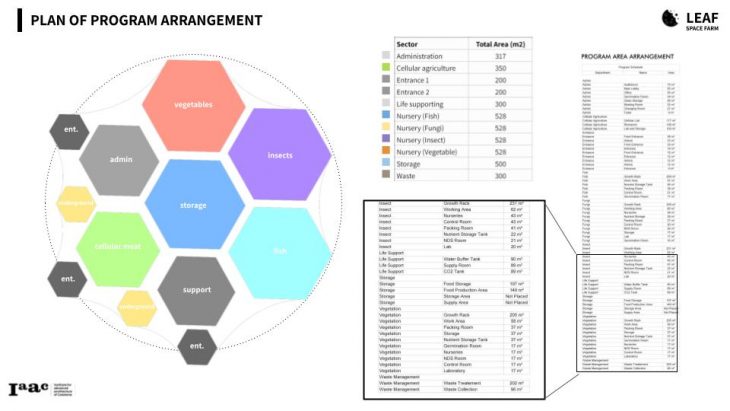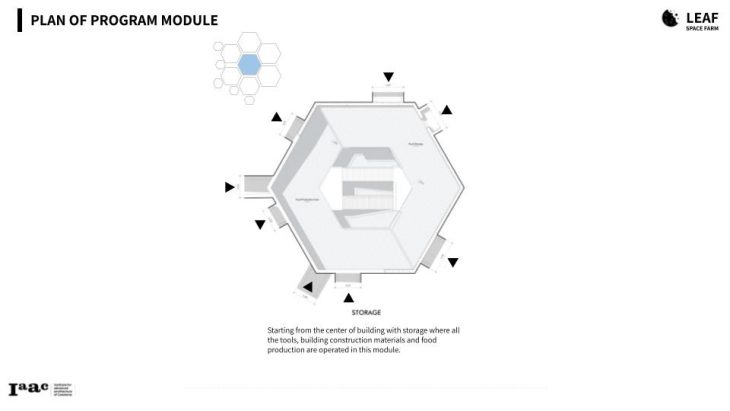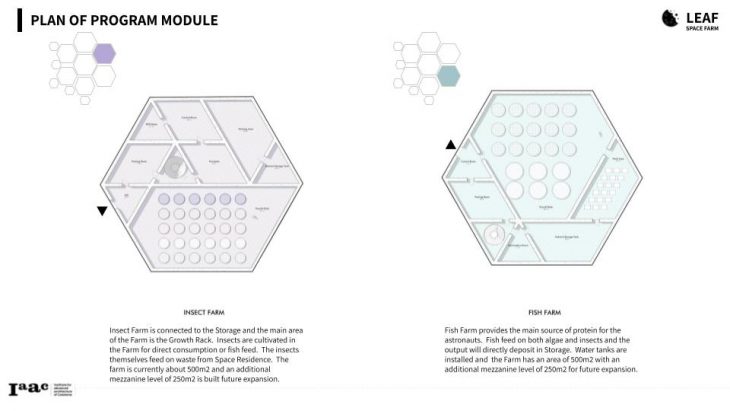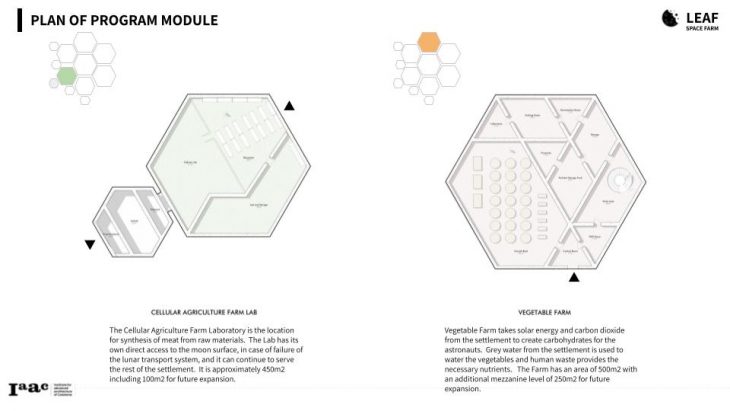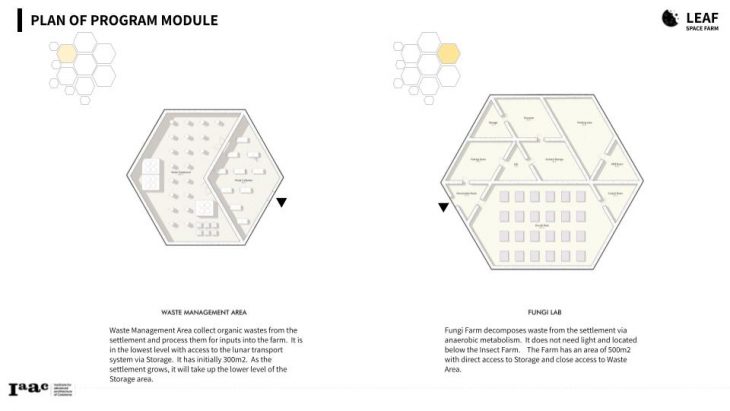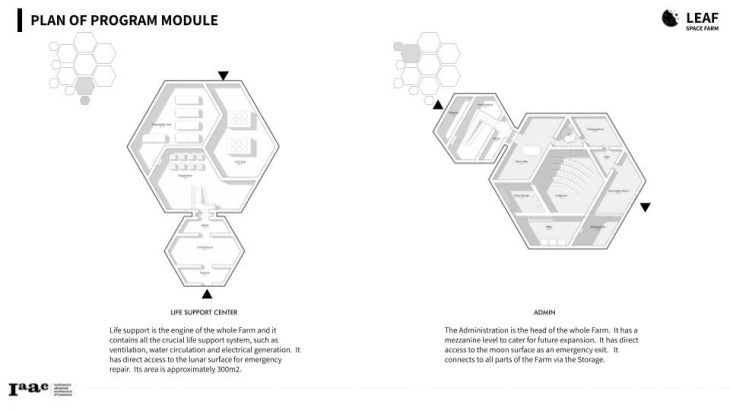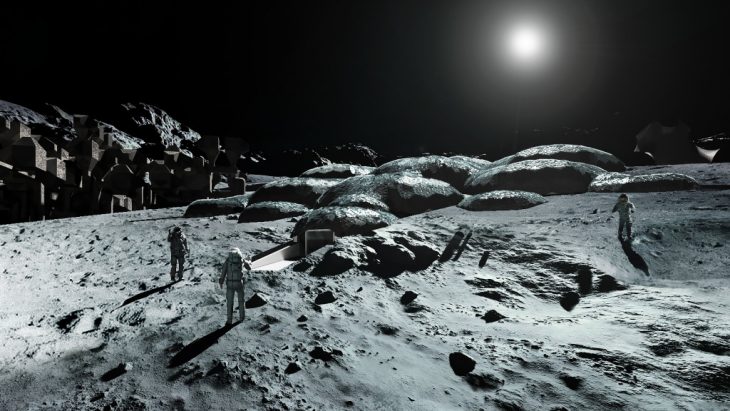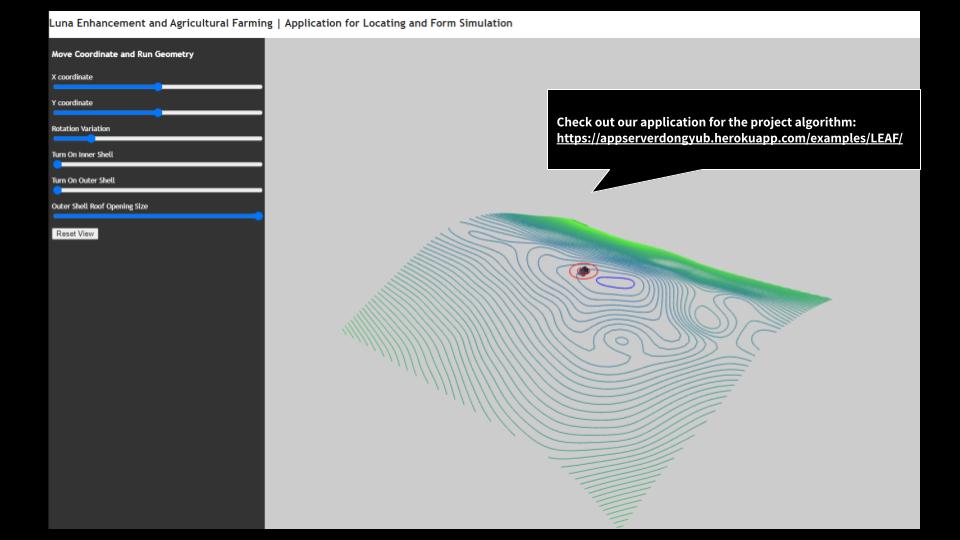LEAF | LUNA ENHANCEMENT AND AGRICULTURAL FARM
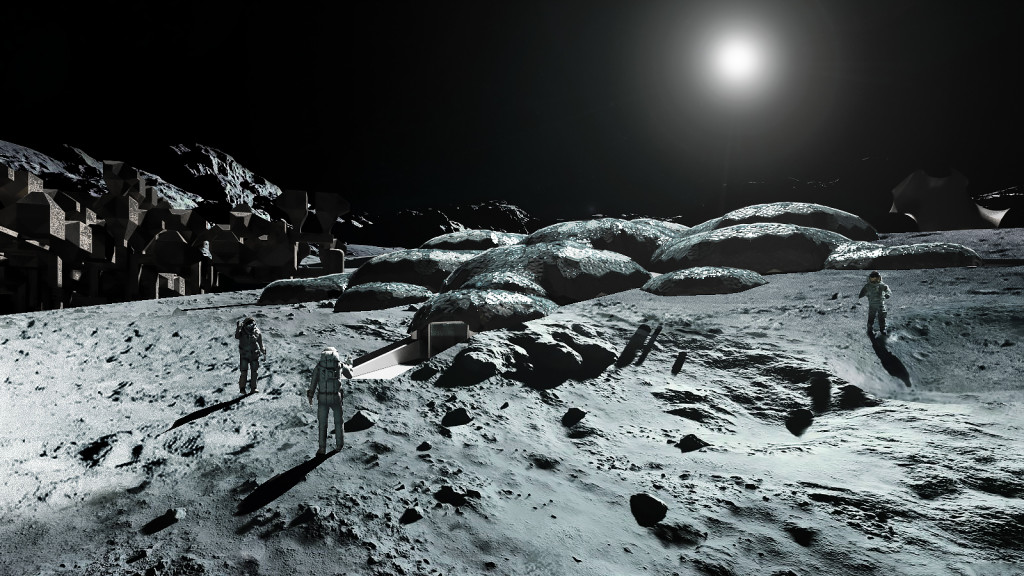
LEAF Space Farm
LEAF Space Farm is based on smart farming technology tested on Earth. Smart farming tackles the issue of farming in urban context with the aim to mimic ecosystem for transforming waste into food. We are facing a similar problem on the Moon. The technology is based the symbiosis relationships between four elements – Fish, Fungi, Insect and Vegetable. For example, water cycle is recreated here when grey water from space residence enters the space farm and it is filtrated by the vegetable sector and the resulting water can be fed to the fish or insect sector. Similar cycles are possible for carbon dioxide, ammonia and phosphates from human waste to turn into carbohydrates, fat and protein for the food consumption of the astronauts. LEAF relies on solar energy to power its cycles. In order to feed 100 astronauts, 5000 square meters will be required considering energy requirement of the astronauts and the inefficiency of lunar farming.
Concept Proposal
As a research of food quantity to be produced per day, the project program areas were referenced by indoor sustainable farm on Earth with the adjusting space suitably to the moon condition.
- Area divisions linked to Excel
Program Arrangement
The program space were arranged on the terrain as the programs that require no light will be placed underground.
Construction Proposal
- In 1972, astronaut Harrison Schmitt brought soil sample from the moon
- That the scientist could extract the possibility of creating local construction materials on the moon
- That the project materials list were selected, as some of them need to be brought from the Earth
- Thinking about the strategy for construction and researching on Case Studies.
- LEAF Layers of protection
- LEAF Layers of protection
- Robotic and Swarm robotics analyze for construction technique
- Concept of process of construction
- Process of project construction
Collaborative Workflows
- Tools map used for the project
- Tools map overall for work strategy
- Process of using tools to collaboration and integrative modeling
- Demonstration of using python to exchange between GoogleSheet and Grasshopper workspace
- Developing from data to calculate program area according to the Google data sheet
- Exporting to Revit using Speckle Grasshopper and Rhino.Inside Revit
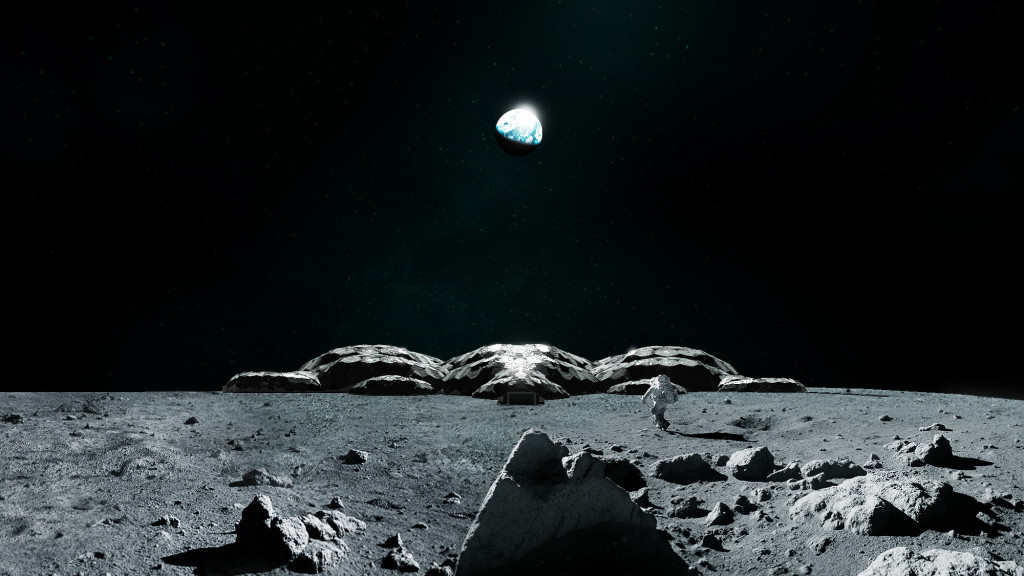
Computational design tools and Building Information Modeling (BIM)
This process of using Revit is part of BIM Smart Construction module of MaCad program where the workflow of transferring data between Rhino to Revit or Revit to Rhino that have majorly involved with Rhino.Inside Revit. For the tools, the design was modelled by Grasshopper to simulate and optimize the geometry, while the second process of transferring and modeling geometry with data were involved with Rhino.Inside component in grasshopper. In this project, LEAF Luna Enhancement and Agricultural Farming, the idea of create BIM workflow is essentially needed as the project is aiming to be built on the moon so all the elements need to have data and location specifically indicated, so Revit became our main tools for adding parameters and help visualizing data from different aspects. Moreover, by using Rhino.Inside helping us to parametrically modify object families, levels, and other elemental ID related such as materials and object types.
- In this modeling strategy the process will be separated into 3 layers of modeling according to the design strategy and responsibility of the individual workflow.
- The interior – modeling and design by Alexander Tong
- For interior elements, once the building was finalize from positioning and simulation, the geometry was brought from Grasshopper to Rhino.Inside by using outline and terrains. In this case, we could extract the elements such as level using z-value of the floor, wall using outline of the plans, floor using outline of the floor. In this initial 3 steps we could have final based geometry to further develop into interior design and room divisions in Revit.
- Fortunately, we could create new elements from the existing elements using Revit library to provide the basic components such as staircase, door, shelves etc.
- Also, to create BIM visualization, we could use the parameter created to obtain the statistics on each module for further analysis such as cost, and material requirements.
- For Inner Shell, this project will focus on the technique of construction and basic environmental factors required.
- That the inflated membrane was simulated from Pressure simulator by Kangaroo2 with specific constraint of mesh sizes below 2m(ETFE standard that can be brought from Earth).
- While the inner shell geodesic domes are hexagonal cells with different size of density accordingly to mesh strategy.
- Each program required daylight in order to reduce the amount of energy consumption. With this factors, the module will be controlled by percentage of opening.
- For structural components the 4 layers of construction including inflated membrane, 3d printed structure, translucent panels, and 3d printed covering were modeled by Grasshopper before using Rhino.Inside to assign the proper family and types.
- For Outer Shell, the design was focused on the fabrication paneling blocks and computational workflow.
- That the tessellation panels will be optimized from Kangaroo and clusterized by LunchBox Machine Learning to group the similar panels related to the area, edge length, orientations, and deviation as shown in different colours.
- After that it will be averaged into unified shape of paneling types before placing back into the original positions.
- By creating types, the design of Outer Shell was modeled in Revit to create new different types of families of panels using Adaptive Component. In this process, it is required some referenced inputs such as groups of points to let Revit knows and begin to create the panels.
- For Outer shell, there are 4 types of design including hexagonal, rectangular, pentagonal, and octagonal panels that will be assigned based on groups of points in Grasshopper using Rhino.Inside Revit.
- That the Adaptive component families could also allow the designer to modify the forms, adding materials, or implementing the openings and other optional variations conveniently.
Project Finale
- Welcome to LEAF
- Outer Shell
- Inner Shell
- Interior Space
- Circulation Diagram
- Neighbor Program Connection
- Storage Module Atmosphere
- West Elevation
- West Section
- South Elevation
- South Section
- Close Up Elements and description
- Ecosystem Section showing the overall activity flows within the project
- Conceptual Elements and Created Revit Family
- LEAF plan
- Vegetable Farming
- Program Area Sheet
LEAF Application for Space Farm Configuration on the Moon
For further information:
